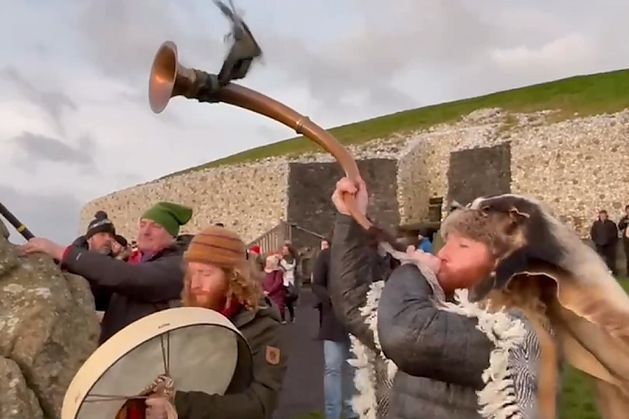Shortest day of the year 2024: Here is everything you need to know ...

As we move into January, the much-celebrated ‘stretch’ in the evenings will become more apparent
Saturday marks the shortest day of the year, also known as the Winter Solstice.
The solstice usually happens around December 21 and the event occurs because the earth’s path around the sun is “unsteady” according to Professor Emeritus at the UCD School of Mathematics and Statistics, Peter Lynch.
Prof Lynch explained clocks run by mean time, which moves in and out synchronisation with naturally occurring solar time.
“The orbit has various irregularities. If we went by solar time, different days would be different lengths and you’d have to be constantly resetting your clocks.
"We use mean time because it is very convenient and that is the average time.
“The illumination of earth happens because of solar time and that varies by about a quarter of an hour throughout the year, plus or minus,” he said.
The difference between clock time and solar time is embodied in a mathematical equation called the equation of time.
Up to a 15-minute difference can exist between solar time and mean solar time, while midday is always 24 hours apart.
The orbit of the earth is not a perfect circle, in fact, it is slightly egg shaped.
The earth is closest to the sun in January and farthest from it six months later.
“This determines how rapidly the earth is going around its orbit because the nearer it is to the sun the faster it’s going and that effects the time,” according to Prof Lynch.
The fact that the earth sits on a titled, 23-degree axis means the “noon day sun” is over different parts of the earth at different times of the year which leads to seasonal variations.
Interestingly, while some might think the shortest day of the year would occur because the sun rises later and sets early, Prof Lynch said this is not the case.
Sunsets usually get progressively later in the week leading up to the solstice with it going from 16:06 to 16:07 earlier this week.
Prof Lynch added as we move into January the much-celebrated ‘stretch’ in the evenings will become more apparent. It is not really until mid to late January before we will really start to notice the famed ‘grand stretch’.
Many people will associate the winter solstice with Ireland’s ancient past and historical passage tombs; the most well-known being Newgrange in Co Meath.
Built by Stone Age farmers 5,200 years ago in the Boyne Valley, Newgrange has a 19-metre passage which leads into a chamber with three alcoves. At sunrise, for 17 minutes, direct sunlight can enter the Newgrange monument to illuminate the chamber, not through the doorway, but through the specially contrived small opening above the entrance known as the ‘roof box’.
It was originally re-discovered by Limerick man and UCC professor, Michael J O'Kelly in 1967.
Gabriel Cooney is Professor of Celtic Archaeology in UCD and a Newgrange expert.
He described Newgrange is an iconic monument and said the fact that it is aligned with the winter solstice adds to it attraction.
“Newgrange is what we would call a passage tomb and there are 10 other passage tombs, give or take, around Ireland which are aligned with either the sunrise or sunset at winter solstice.
“So, the people who built it were part of a cultural tradition in which this concept of marking key time points of the year was something that they incorporated into the building of these monuments,” he said.
Prof Cooney said the importance of the turning point in the year is something which is evident from many other societies around the world who also sought to mark the beginning of the days getting longer once more.
He said the Stone Age builders who erected Newgrange knew exactly where the sun was going to set for several days leading up to solstice.
So accurate was their understanding, that if Newgrange did not exist, the sun would set perfectly on the southern slope of the ridge where it sits on solstice.
Prof Cooney said, Newgrange and similar passage tombs were places where ancient tribes buried their dead so they could feel closer to them as the passed on to the next life.
“These were place where the remains of people were placed.
"So, if you think about that, these were monuments that contained the bones of the dead; something that would have been very important in an agricultural society.
“So, to me what the alignment with the sunrise is doing is it’s a reminder of that; the connection between the other world and the earth and then this notion of speaking to those ancestors. So, there is a religious belief about that,” he added.
This article was first published December 2021.











































